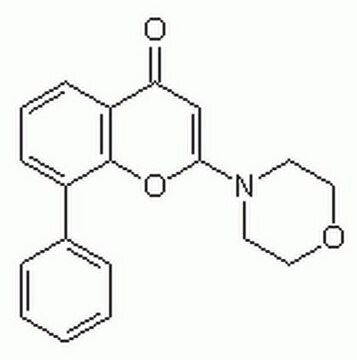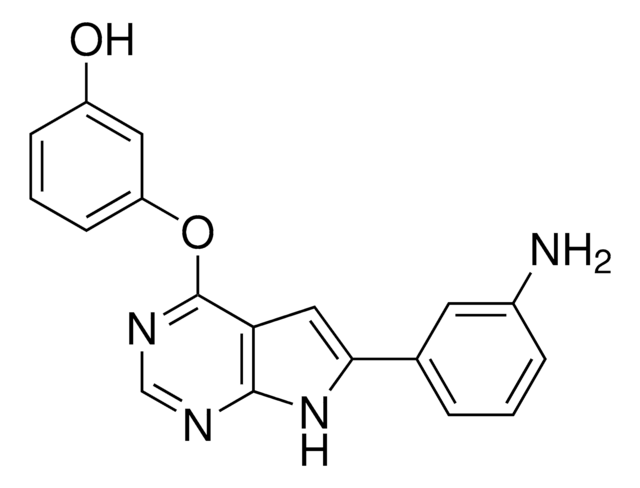553211
Rapamycin
≥95% (HPLC), solution, mTOR inhibitor, Calbiochem
Synonim(y):
InSolution Rapamycin, mTOR Inhibitor I
About This Item
Polecane produkty
product name
Rapamycin, Ready Made Solution, 2.5 mg/mL in DMSO (2.74 mM), from Streptomyces hygroscopicus
Poziom jakości
Próba
≥95% (HPLC)
Postać
solution
producent / nazwa handlowa
Calbiochem®
warunki przechowywania
desiccated (hygroscopic)
protect from light
Warunki transportu
wet ice
temp. przechowywania
−20°C
Opis ogólny
Działania biochem./fizjol.
Mammalian target of rapamycin (mTOR)
Opakowanie
Ostrzeżenie
Postać fizyczna
Rekonstytucja
Informacje prawne
Kod klasy składowania
10 - Combustible liquids
Klasa zagrożenia wodnego (WGK)
WGK 1
Temperatura zapłonu (°F)
188.6 °F - closed cup - (Dimethylsulfoxide)
Temperatura zapłonu (°C)
87 °C - closed cup - (Dimethylsulfoxide)
Certyfikaty analizy (CoA)
Poszukaj Certyfikaty analizy (CoA), wpisując numer partii/serii produktów. Numery serii i partii można znaleźć na etykiecie produktu po słowach „seria” lub „partia”.
Masz już ten produkt?
Dokumenty związane z niedawno zakupionymi produktami zostały zamieszczone w Bibliotece dokumentów.
Klienci oglądali również te produkty
Nasz zespół naukowców ma doświadczenie we wszystkich obszarach badań, w tym w naukach przyrodniczych, materiałoznawstwie, syntezie chemicznej, chromatografii, analityce i wielu innych dziedzinach.
Skontaktuj się z zespołem ds. pomocy technicznej











